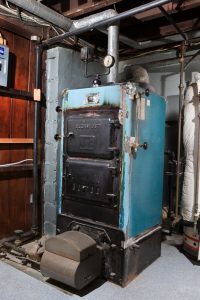Being cold in the winter is normal – as long as you are outside. But you shouldn’t be cold inside your New Britain home. If that happens, the first place to look to is your furnace, which may not be working correctly. Furnaces are like any other piece of mechanical equipment. They need to be maintained and serviced on a regular basis to ensure they are working at peak efficiency and warming your entire home at your desired comfort level.
The best time to get your furnace ready for winter is not during the cold winter months – it is before the winter season even begins. There are several way to get your furnace ready for winter and let’s explore some of them.
First of all, check and see when you last had your furnace serviced. If it has been over one year ago, you should schedule and maintenance inspection from your local qualified heating and cooling professional. And when you make that appointment, ask about service agreements and getting on a regular maintenance schedule. Most heating and cooling contractors offer service agreement plans which include furnace and air conditioning check-ups on an annual basis.
Okay, so you know who to call for maintenance but what can you do yourself? First of all, give your furnace a little “help” by checking the vents and returns throughout the house. Ensure that there are no obstructions or blockages such as rugs, clothing, furniture, etc. You need to have unobstructed paths for your heated and return air to flow. The more congested the path, the harder your furnace will have to work. And while you’re at it, make sure your vents are open or closed, depending on how much you use your rooms. For example, if you have an extra bedroom that doesn’t need to be heated, closed off the vent or close the damper in the ductwork. The heated air will be diverted to other parts of your home where it is needed.
You can also help the airflow by vacuuming the vent cover or removing it and vacuuming any of the ductwork that you can easily get to. For a more thorough job consider calling a qualified and professional duct cleaning contractor. Many heating and cooling contractors also offer duct cleaning service, too.
Another maintenance function that you can perform is cleaning or replacing the furnace filter. Depending on the size of your home and its air quality (occupants, pets, etc.), you may want to clean or replace your air filter every one to three months. A dirty filter can restrict airflow and can put contaminants like dirt and dust right back into your air system. If you don’t know how to replace your air filter, consult the furnace owner’s manual or go online to learn more. If your furnace uses an electrostatic air filter, it will need to be removed and cleaned, either by using a hose or with soapy water and a hose. Make sure you let it dry before re-installing it.
You may also want to inspect any electrical wires around your furnace to ensure none are broken or frayed. A visual inspection should be good enough.
Once you have done what you can, let your heating and cooling professional take over from there. They are licensed and trained to inspect your furnace and ensure that it is in peak operating condition. And do it today – while everyone else is waiting.
Continue Reading
Tags: Furnace Maintenance, Heating, New Britain, Souderton, Telford, Warminster
Posted in Heating | Comments Off on How to Get My Furnace Ready for Winter
 We’re getting close to the heating season. As we shut off our air conditioners one by one, the heaters will begin to turn on—except for the ones that haven’t been maintained properly. That’s right, if you’ve kept up with our blogs during this cooling season, it’s not just air conditioners that could benefit from yearly maintenance, but furnaces as well!
We’re getting close to the heating season. As we shut off our air conditioners one by one, the heaters will begin to turn on—except for the ones that haven’t been maintained properly. That’s right, if you’ve kept up with our blogs during this cooling season, it’s not just air conditioners that could benefit from yearly maintenance, but furnaces as well!
 There are right and wrong ways to take care of your furnace if you want to last as long as possible. Most of the time, we talk about all the things that you should be doing to keep your furnace in top condition as long as you can. Today, though, we’d like to cover some of the things you should do if you want to waste your system’s life and replace it as early as possible. Let’s begin.
There are right and wrong ways to take care of your furnace if you want to last as long as possible. Most of the time, we talk about all the things that you should be doing to keep your furnace in top condition as long as you can. Today, though, we’d like to cover some of the things you should do if you want to waste your system’s life and replace it as early as possible. Let’s begin.